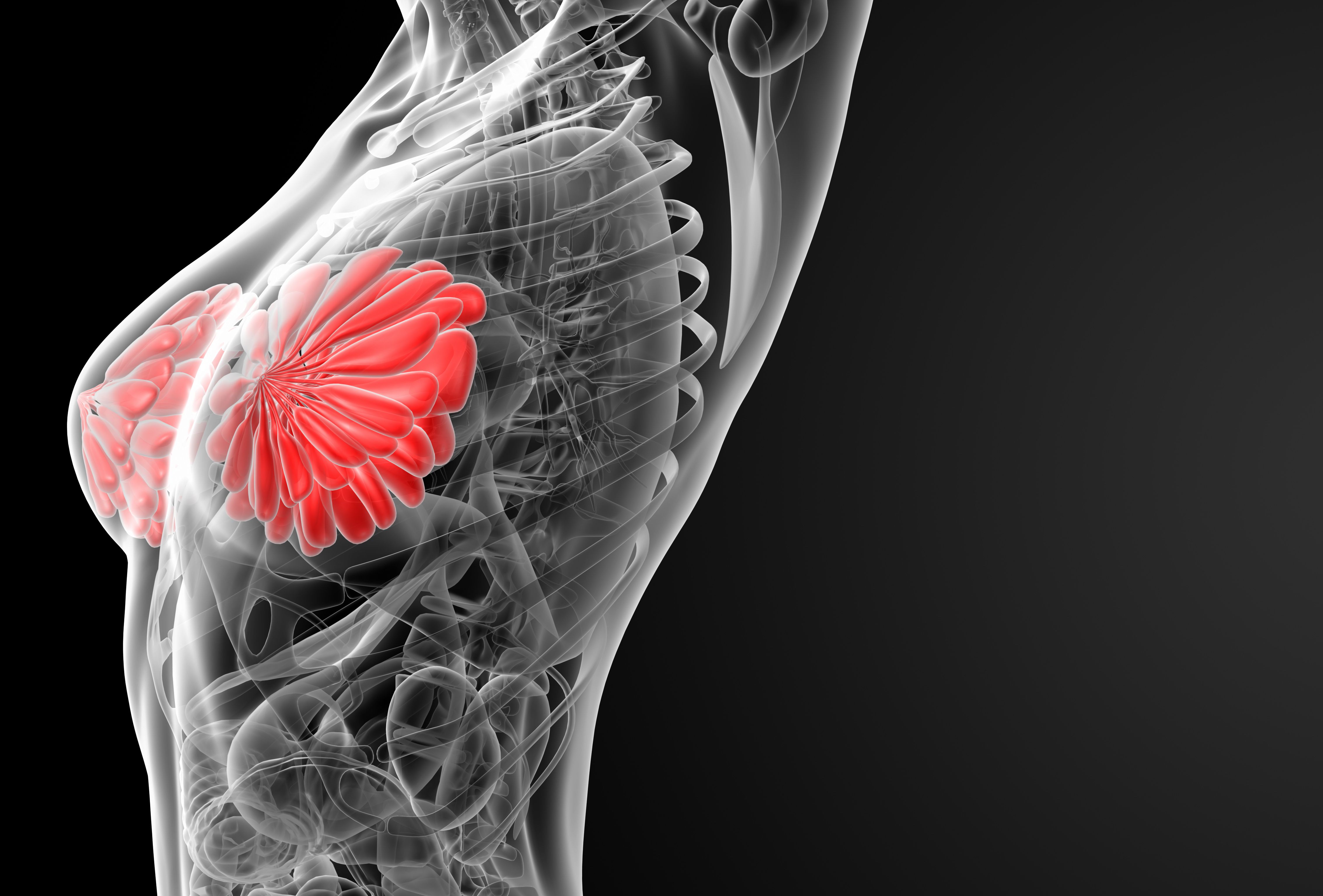AI-Supported Mammography Screening Leads to Increased Breast Cancer Detection Rate
The use of artificial intelligence led to a higher rate of breast cancer detection as an improvement for mammography screening compared with standard detection methods.
The use of artificial intelligence led to a higher rate of breast cancer detection as an improvement for mammography screening compared with standard detection methods.

The use of artificial intelligence (AI)–supported mammography screening was feasible, safe, and more likely to detect breast cancer compared with a standard double reader approach, according to results of the real-world PRAIM trial (DRKS00027322) that were published in Nature Medicine.1,2
Findings showed that the breast cancer detection rate was 6.7 per 1000 women screened, which was a relative increase of 17.6% (95% CI, +5.7% to +30.8%) and statistically superior to the 5.7 per 1000 rate that was detected in the control group. Additionally, the recall rates were 37.4 per 1000 and 38.3 per 1000 in the AI-supported and control groups, respectively (–2.5% difference; –6.5% to +1.7%). The positive predictive value (PPV) of recall rates were 17.9% and 14.9%, respectively. When the PPV of biopsy was assessed in both groups, these rates were 64.5% with AI and 59.2% in the control group.
“Compared to standard double reading, AI-supported double reading was associated with a higher breast cancer detection rate without negatively affecting the recall rate, strongly indicating that AI can improve mammography screening metrics,” lead study author Nora Eisemann, PhD, of the Institute for Social Medicine and Epidemiology, University of Lübeck, in Lubeck, Germany, and coinvestigators wrote in the publication of the findings.
While mammography is designed to reduce breast cancer mortality, the authors emphasize that improvements are still needed in breast cancer screening, especially with improved screening sensitivity and specificity. “A higher specificity would lessen the burden on the screening participants and the healthcare system by minimizing unnecessary, invasive and costly medical procedures,” the authors noted.
Moreover, they hypothesized that building AI into breast cancer screening workflows could potentially help with some of the above challenges and could provide comparable and sometimes superior accuracy for radiologists and support them in the identification of subtle abnormalities.
In the observational, multicenter, real-world, noninferiority, implementation PRAIM study, investigators compared the performance of AI-supported double reading (n = 260,739) compared with standard double reading (n = 201,079) in women undergoing mammography screening.
The standard approach consisted of an initial reading of a mammograph by 2 radiologists. If at least 1 radiologist finds the case suspicious, a consensus conference takes place with at least 2 initial readers and 1 head radiologist. If suspicious findings are also found in this setting, the patient is brought back in for further testing, which can include an ultrasonography, digital breast tomosynthesis, magnification views, contrast-enhanced mammography, or MRI.
In PRAIM, when at least 2 radiologists read and submitted the report with an AI-supported viewer, which was Vara MG, those patients were assigned to the AI arm.
Data was comprised of 12 sites in Germany, and women were aged between 50 years and 69 years. Radiologists had the discretion to use the AI system or utilize the standard approach.
A total 463,094 women were screened between July 1, 2021, and February 23, 2023, by 119 radiologists. Overall, the median age was 58 years (IQR, 54-63) and 34.2% of patients had dense breasts. There were 547 total reader sets, with a mean 844 women screened per reader set; recalls overall occurred at 41.9 per 1000, preoperative biopsies at 10.4 per 1000, and the PPV biopsy rate was 59.6%.
A total 2,881 breast cancers were detected, comprising ductal carcinoma in situ (18.9%), invasive disease (79.4%), and other (1.7%). Breast cancer stage was either 0 (18.9%), 1 (51.0%), 2 (21.1%), 3 (1.9%), 4 (0.1%), X (3.0%), or missing (4.1%). Invasive cancer grade was G1 (22.6%), G2 (57.7%), G3 (12.7%), X (3.3%), or missing (3.7%). Finally, invasive cancer size was 10 mm or smaller (36.0%), 10 mm to 20 mm (43.3%), more than 20 mm (20.2%), or missing (0.5%).
Further findings showed that the biopsy rate in the AI group was 10.4 per 1000 women screened vs 9.6 per 1000 in the control group, demonstrating a percentage difference of 8.2% (–0.4% to 17.6%). However, the AI group did demonstrate a statistically significantly higher PPV of biopsy of +9.0% (+2.0% to +16.4%).
“To our knowledge, it is the largest study on the effect of integrating AI into mammography screening on the [breast cancer detection rate] and recall rate,” the authors emphasized in the publication. “This study extensively reports AI’s performance in clinically relevant subgroups by screening round, breast density, age, cancer invasiveness, stage, grade and size, with important implications for policy-making.”
Study limitations include the fact that there was no random assignment of screening examinations, and therefore a risk that existing factors influenced radiologist decision to use AI to interpret exams, leading to bias.
“Our findings substantially add to the growing body of evidence suggesting that AI-supported mammography screening is feasible and safe and can reduce workload,” the authors concluded. “Our study also demonstrates that integrating AI into the screening workflow can improve the [breast cancer detection rate] with a similar or even lower recall rate. The important downstream effects of AI-supported screening on overall program performance metrics, including interval cancer rate and stage-at-diagnosis distribution at subsequent screening rounds, are subject to follow-up investigations.”
References
- Eisemann N, Bunk S, Mukama T, et al. Nationwide real-world implementation of AI for cancer detection in population-based mammography screening. Nature Med. Published January 7, 2025. doi:10.1038/s41591-024-03408-6
- More breast cancer cases found when AI used in screenings, study finds. The Guardian. News release. January 7, 2025. Accessed January 8, 2025. https://tinyurl.com/33zvkrwe
Newsletter
Stay up to date on recent advances in the multidisciplinary approach to cancer.